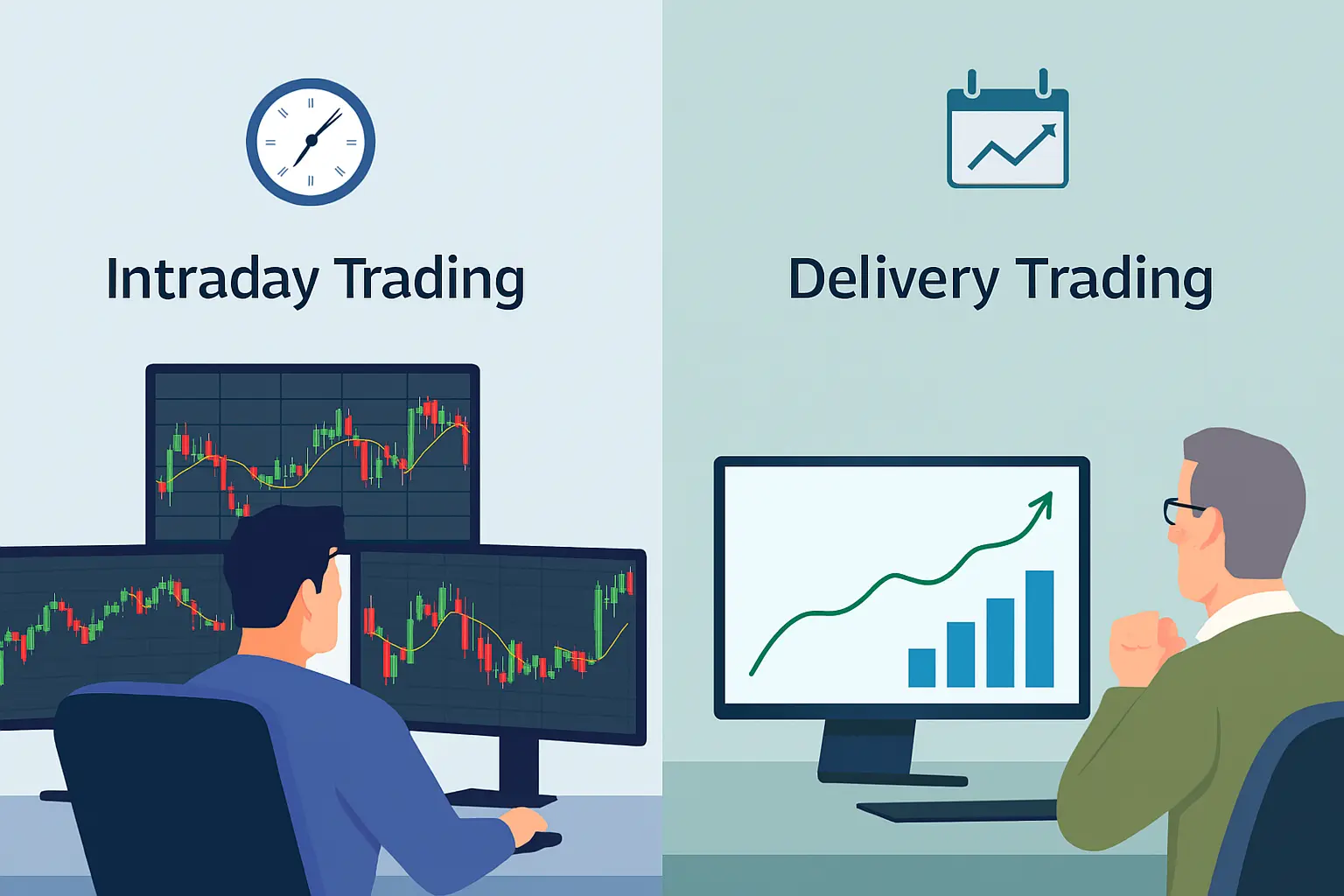Intraday vs Delivery Trading
Are you confused about what to choose between intraday or delivery trading in the stock market?. With the help of this blog, we help you to understand the difference between intraday and delivery trading. This will help you to make better investment decisions.
Schedule a consultation
What Is Intraday Trading
Intraday trading refers to buying and selling stocks within the same trading day. Traders get profits from small price fluctuations by closing all the positions.
To read more about what is intraday trading is, visit our page by clicking on the highlighted text.
What Is Delivery Trading?
It refers to buying shares and holding them for more than a day. You can hold the shares that are credited to your demat account. Also, focusing on positional growth over a period.
Intraday Trading Benefits
Quick profits: Traders can buy and sell within the same trading day and can also take advantage of small price movements.
Low Investment Entry: Using intraday margins, traders can buy shares beyond their capital limits.
Trading opportunities: Volatile movements offer more chances within a trading day to make profits using technical strategies.
Delivery Trading Benefits
No Time Pressure: You can hold stocks until they reach your target price, and there is no need to sell them quickly.
Ownership shares: You may get dividends from the company if you hold stocks for a long period.
Long-Term Wealth Creation: Investors can benefit from the long-term wealth of strong companies over time. This is ideal for the long-term investors.
Short-term volatility: This will not affect long-term investors due to daily price fluctuations.
Understanding the disadvantages of Intraday Trading
Without preparation: The beginners might face losses by entering trades without understanding the markets.
Need Monitoring: You need to keep track of your positions in real-time because markets change rapidly.
Intraday trading can offer quick profits, but it also comes with hurdles like volatility, timing, and emotional pressure. You can read more about these in our blog on Challenges of Intraday Traders.
Disadvantages of Delivery Trading
Selling holdings: Once you invest, your funds will remain locked until you sell your holdings.
Effect of Small Investments: If your investment amount is small, you can only buy a few shares, unlike intraday, where margins are available.
Small returns: Significant price appreciation might take weeks, months, or years depending on market conditions.
Poor stock selection: Wrong selection can cause long-term losses because of underperforming stocks.
How The Risk-Reward Effect Intraday and Delivery Trading
Understanding risk-reward can be crucial before investing in intraday and delivery trading. One of the major differences between these two trading approaches lies in traders’ risk.
Intraday Trading:
Traders can benefit from small price movements within a trading day.
You may face losses without a proper stop-loss strategy.
If trade moves in your favor, then you get faster rewards as well.
Delivery Trading:
Negative news after market hours may affect your stocks.
Holding period helps to identify short-term losses.
Returns are generally based on company growth and market trends.

At The Trade Bond, our team helps you understand both styles of trading with simple guidance. Whether you’re curious about how intraday trading works or need help building a delivery-based portfolio.
FILL THE FORM BELOW TO GET A FREE SESSION WITH ADVISOR

